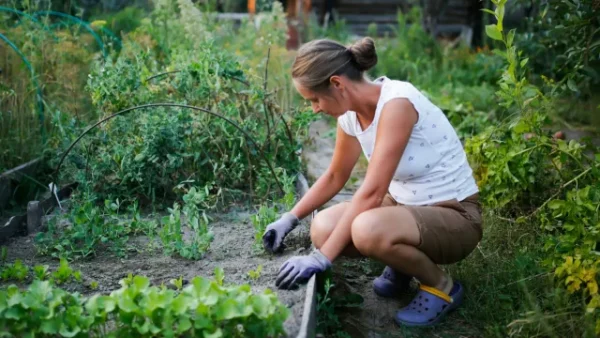
Gardening isn’t just a springtime affair; it’s a year-round journey. Whether you’re wrapping up in your warmest jumper to protect your plants from the frost, or you’re choosing the brightest blooms for the summer sun, there’s always something to be done in the garden.
With each season offering a unique charm and set of challenges, let’s explore how you can tailor your outdoor space to thrive throughout the year.
Spring: A New Beginning
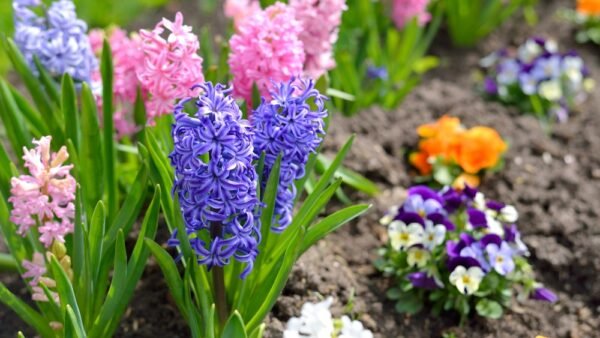
Spring is nature’s way of hitting the reset button, making it the perfect time to breathe new life into your garden. Start by waking up your garden with some early maintenance. Clear out dead vegetation and debris, and trim back any overgrown bushes or perennials that were left to winter. This helps prevent diseases and pests from proliferating as the temperatures rise.
Planting bulbs in spring is practically a rite of passage for any gardener. Daffodils, tulips, and hyacinths are not just beautiful, but they’re also some of the first pops of colour to emerge in your garden each year. For instant colour, consider adding polyanthus or primroses, which thrive in the cool spring air.

This is also a great time to start your kitchen garden. Hardy herbs like chives, parsley, and thyme can begin to find their footing now. If you have a greenhouse, start your seedlings indoors to give them a head start before transplanting them outside after the last frost.
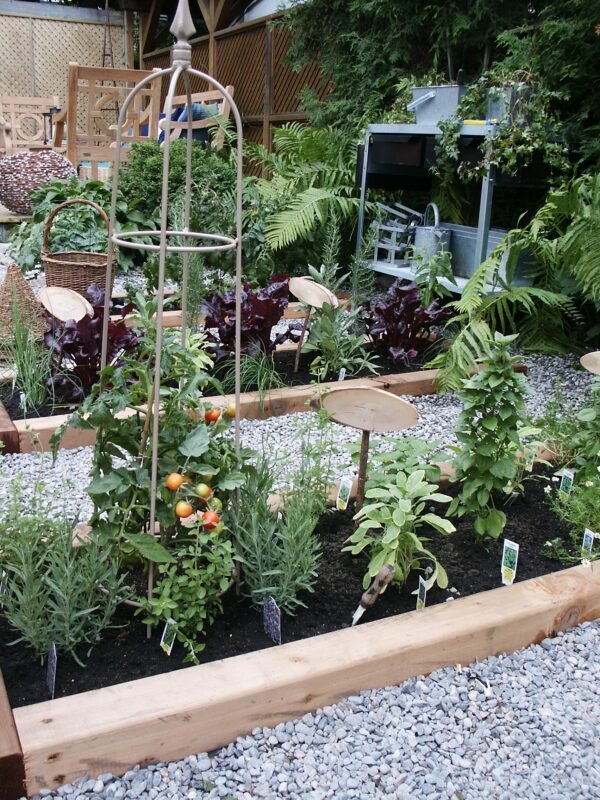
Summer: Full Bloom and Function
As the days get longer, your garden turns into a vibrant tapestry of colours. This is your garden’s moment to shine, so make the most of it by planting a variety of flowering plants like petunias, marigolds, and begonias. These not only add beauty but also attract bees, butterflies, and other beneficial insects.
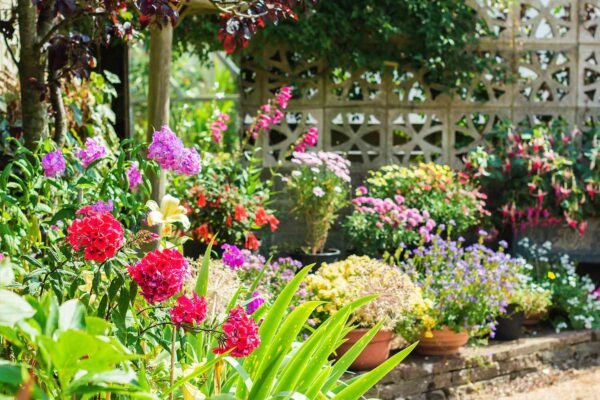
Your lawn might need extra attention during these months. Regular mowing, watering in the early morning or late evening to minimise evaporation and a dose of lawn feed can keep it looking lush and green.
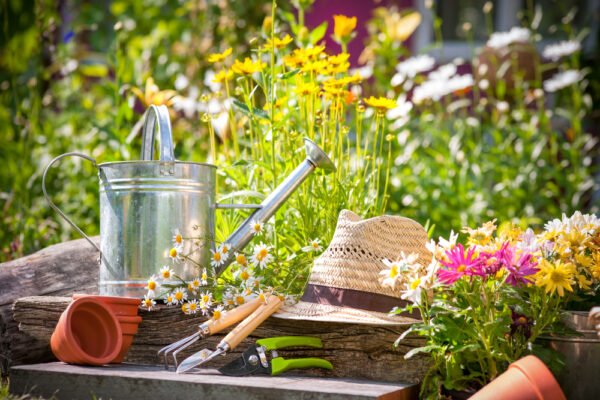
Think about creating spaces for relaxation and entertainment. A set of luxury garden furniture from Woodlark Garden Luxury can effortlessly transform your garden into a stylish retreat or a convivial space to host summer barbeques and garden parties. Remember, it’s not just about the plants; your garden should be a place to relax and enjoy the fruits of your labour.
Autumn: Preparation and Transition
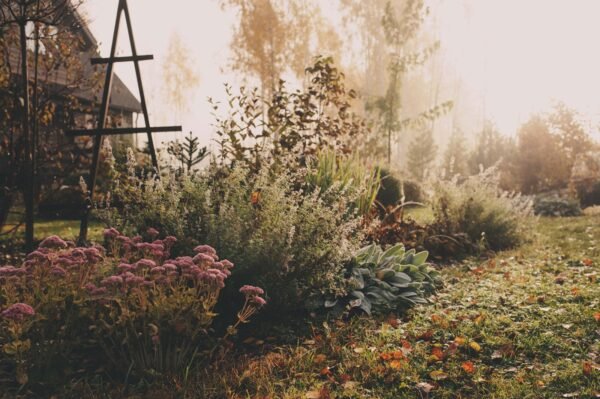
Autumn, as we all know, thanks to a certain much-loved poet, is the season of “mellow fruitfulness” – but it’s also a vital period of preparation. Begin by planting spring bulbs such as crocus, alliums, and early tulips. These bulbs need the winter cold to trigger their spring bloom, making early autumn the ideal time to get them into the ground. They’ll provide an early splash of colour come spring, just when you need it most.
It’s also the perfect time to add new shrubs and trees, as the wetter weather helps them establish roots in the cooler ground. The moisture available in autumn helps new plantings establish a strong root system before the frosts of winter, giving them a better chance at thriving in spring. Consider species that are known for their hardiness and ability to contribute to the local ecosystem.
This is a critical time for lawn care as well. Aerate your lawn to deal with compaction. This involves making small holes in the soil, which allow air, water, and nutrients to penetrate the roots of the grass, leading to a healthier and more robust lawn. Follow this by adding a top dressing—a mixture of sand, soil, and compost—to improve soil quality and drainage. This helps in creating a stronger, more drought-resistant lawn.
Applying autumn lawn feed, which is high in potassium, will help to prepare your grass for the cold months ahead by strengthening the roots and increasing cold resistance. As leaves start to fall, regularly rake them up to keep your lawn healthy and use them to create leaf mould. This leaf mould is not only a great way to tidy your garden but also provides you with a fantastic soil conditioner for the following year. It enriches the soil, retains moisture, and can suppress plant diseases.
Winter: Beauty in Rest
Winter doesn’t mean your garden has to be bare. Structural plants like evergreens or those with interesting bark or winter berries can add life to a seemingly sleeping garden. Consider holly, with its bright red berries, or the fiery stems of dogwood, which stand out against the stark winter landscape. These plants provide visual interest and are also vital for wildlife, offering shelter and food during the harsh months.
Winter is also about planning. Use this quieter time to reflect on what worked in your garden over the past year and what didn’t. Maybe you’ll find that certain plants didn’t thrive where they were planted, or perhaps you want to expand your vegetable garden. Planning your next steps, whether it’s a new garden layout or trying different plant varieties, can be a fulfilling winter activity. Draw up plans and prepare for the busy spring season ahead.
Ensure your garden furniture is protected from the elements with covers, or stored away to prevent damage from the cold and wet. This helps to extend the life of your outdoor furniture and ensures that it’s ready to use when the weather warms up.
Year-Round Tips
No matter the season, there are a few things that always need attention in the garden. Effective management of these aspects ensures a thriving, healthy garden all year round.
Weeding: A Constant Battle
Weeding is one of the most critical tasks in the garden, and it’s something you’ll have to manage throughout the year. Weeds compete with your plants for space, light, nutrients, and water. By keeping them under control, you help ensure that your plants can thrive without unnecessary competition. Regular weeding also helps to keep your garden looking tidy and can prevent the establishment of invasive species that could be difficult to control later on.
Pest and Disease Monitoring
Regularly checking your plants for signs of disease or pest issues is crucial. Early detection is key to preventing these problems from spreading and becoming more severe. Look for common signs such as discoloured leaves, stunted growth, blotchy or spotted leaves, and visible pests. Consider reaching out to pest control services in Baton Rouge nearby areas for professional assistance in managing any infestations or diseases that may arise.
Composting: Turn Waste Into Gold
Composting is a fantastic way to recycle kitchen and garden waste, transforming it into a nutrient-rich material that can greatly enhance the health of your garden soil. This process not only reduces the amount of waste going to landfill but also helps to enrich the soil, improving plant health and reducing the need for chemical fertilisers. Compost provides a slow release of nutrients that is perfect for most plants and improves soil structure, which enhances water retention and air circulation.
Consistent Watering: Keeping the Balance
Watering your garden is about consistency and understanding the needs of your plants. Over-watering can be just as harmful as under-watering, leading to poor plant health and even root rot. Implementing a watering schedule that takes into account the weather and season can help ensure that your plants receive the right amount of water. During dry periods, deeper, less frequent watering encourages deeper root growth and helps plants become more drought-resistant.
Wrapping Up
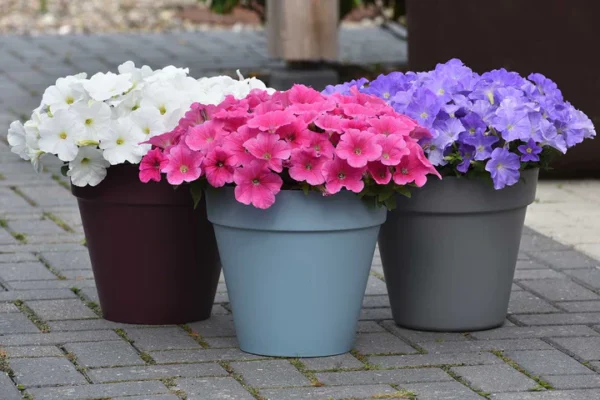
Each season brings its own joys and tasks in the garden. By planning your activities according to the season, not only will you work more efficiently, but your garden will also become a dynamic space that changes beautifully throughout the year.
Whether it’s the fresh growth of spring or the quiet dignity of winter, there’s always beauty to be found and work to be done in the garden.
